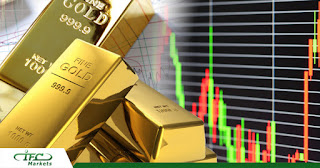TRADERS AND INVESTORS
In the stock market there exist the concepts of trading and investing, which are often perceived as the same. In fact, they have some similarities, since a trader and an investor make transactions in the financial market with the aim to make a profit, but they do so in different manners.
Trading is a speculative activity the aim of which is to make a profit from the price changes of a tradable asset in a short period of time. A trader can make money both on the purchase and on the sale of an asset by using technical analysis of the market.
Investing is the investment of own funds in financial assets for a long period of time with the aim to make a profit in the form of dividends or interests.
The main differences between investing and trading:- Firstly, they differ in terms of investments: investors make long-term investments and traders buy and sell assets several times within a day.
- Investors receive dividends and income from the rise in the prices of the assets bought by them, and traders make money on the difference of the prices by making speculative transactions.
- By choosing specific financial assets, investors use fundamental analysis to study the prospects of the increase of the prices of these assets. To determine the points of entry to the market and exit, a trader, as a rule, uses both fundamental and technical analyses to study the short-term price movements of the asset, as he is not interested what will happen to it in a year or two – he acts upon facts.
- A trader trades stocks, bonds, futures, options, currencies, precious metals, etc. Investors, as a rule, invest their funds in shares of various companies. In addition, for the diversification of their portfolios, they also invest in other financial instruments and real investments (purchase of a real capital).
In case of sufficient capital, the same person can be both a trader and an investor. Many, in case of a long-term portfolio on some instruments, hold short-term positions.
The world’s famous investors and traders
In 2008, one of the most famous investors Warren Buffett became the richest man in the world with a fortune of $62 billion. From the early ages, the future billionaire expressed interest in trading as his father was a stockbroker. From the very beginning of his professional career, Warren was investing his funds in stocks, which were quoted on the exchange lower than their actual prices were. His the most successful investment was the purchase of controlling block of shares of a textile company Berkshire Hathaway, which later became a holding company and now it includes companies from various sectors of the economy. In 2010, Warren transferred 50% ($37 billion) of his fortune to charitable foundations.
Famous futures trader Larry Williams started working on the stock exchange at the age of 22. He became popular due to the participation in Robbins World Cup tournament in 1987, when he managed to increase his capital from $10.000 to $1, 1 million by trading futures. Black Wednesday (September 16, 1992) became the luckiest day for George Soros. At that period of time, like many other traders, by anticipating the rejection of the Bank of England from interventions and the devaluation of the pound, Soros sold 5 billion pounds in exchange for the German mark, which allowed him to earn more than 1 billion dollars (according to various estimations up to $2 billion).





